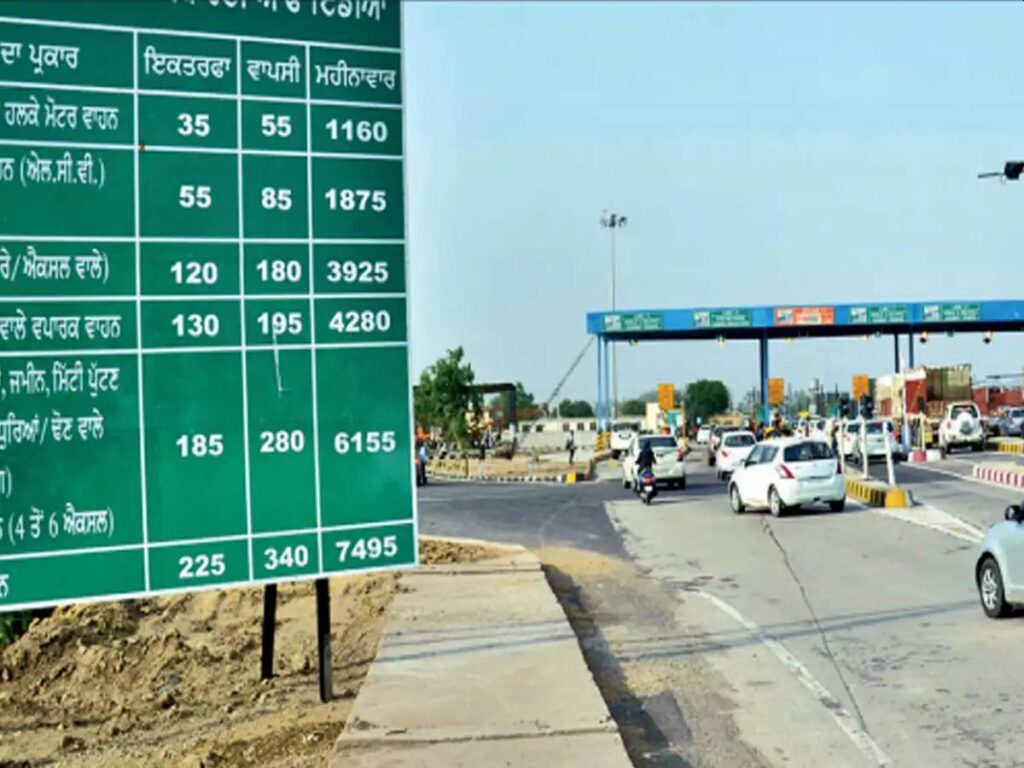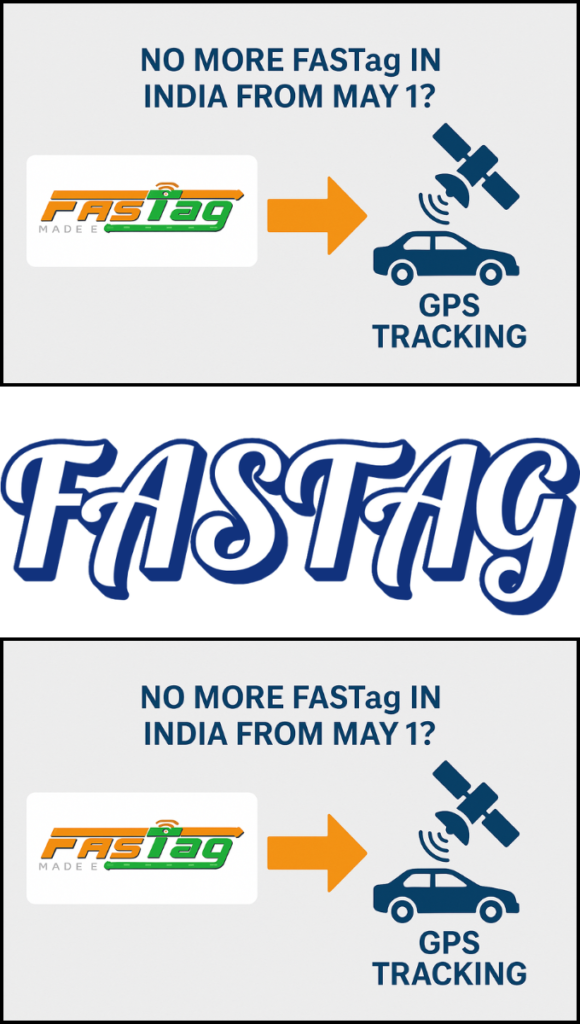In a groundbreaking move that’s set to revolutionize the way we pay tolls in India, the government may phase out FASTag starting May 1, 2025, in favor of a GPS-based toll collection system. With India’s road network expanding rapidly and vehicle numbers soaring, this transition could mark a turning point in reducing congestion, boosting efficiency, and improving transparency in toll payments.
But what does this mean for the average Indian commuter, truck driver, or road traveler? Will FASTags really become obsolete? And how will the new system work?
Let’s break it down.
What is FASTag and Why Is It Being Replaced?
The FASTag Revolution
FASTag, introduced by the National Highways Authority of India (NHAI) in 2016, quickly became a game-changer for toll collection. It uses Radio Frequency Identification (RFID) technology to automatically deduct toll charges as vehicles pass through toll plazas. This system reduced waiting time, curbed cash transactions, and helped digitalize Indian highways.

As of 2024, over 7 crore FASTags were in use. However, despite its advantages, several challenges persisted:
- Long queues at toll booths during peak hours
- Cases of double deductions or failed scans
- FASTag misuse or non-functional tags
- High operating costs for toll plaza infrastructure
Enter GPS-Based Tolling
To address these issues, the government has proposed a GPS-based toll collection mechanism, which is expected to:
- Eliminate the need for physical toll booths
- Enable tolling based on the distance traveled on national highways
- Improve tracking and analytics of vehicular movement
- Reduce fuel consumption and carbon emissions caused by idling at toll gates
What Will Happen From May 1, 2025?
According to transport ministry sources, the rollout of the GPS-based tolling system will begin on a pilot basis from May 1, 2025, with the long-term goal of eventually replacing FASTag altogether.
Here’s what we know so far:
- FASTags will continue to be functional during the transition phase.
- New vehicles may soon come pre-fitted with GPS-based toll tracking devices.
- Existing vehicles will need to get their GPS modules linked with their bank accounts or toll wallets.
- Pilot testing is being conducted on select stretches of the National Highway network.
While an official deadline for phasing out FASTag hasn’t been confirmed, May 1 marks the start of a new era in toll management in India.
How Will the GPS-Based Toll Collection System Work?
The new system aims to charge vehicles dynamically based on their actual usage of the road. Here’s a step-by-step look at how it’s expected to function:
- GPS Device Installation: Each vehicle will be equipped with a GPS device (either factory-fitted or externally installed).
- Entry Detection: As a vehicle enters a tollable highway stretch, its location is marked via satellite tracking.
- Exit Point: The GPS tracks the vehicle’s path and records the exit point.
- Distance Calculation: The system calculates the exact kilometers traveled on tolled roads.
- Automatic Deduction: Toll is auto-debited from the user’s linked account/wallet based on the per-kilometer rate.
This model has been successfully implemented in countries like Germany, Russia, and Singapore, and offers a modern alternative to fixed-location toll booths.
Key Benefits of the GPS-Based Tolling System
1. No More Toll Booths
The most significant change: toll plazas may vanish altogether. This will drastically reduce traffic congestion, especially near metropolitan areas and entry-exit points of highways.
2. Pay-as-You-Go
Instead of paying a fixed toll, you’ll now pay only for the distance traveled, making the system more fair and accurate.
3. Fuel and Time Savings
No stopping, no queues, no idling engines. The GPS system promises smoother rides and fuel efficiency, which is good for both your pocket and the planet.
4. Reduced Corruption and Leakages
Automated tracking and digital deduction will minimize human intervention, reducing the scope for toll fraud or mismanagement.
5. Greater Transparency
With a full digital record of journeys, toll charges will be easily traceable and auditable.
What Are the Concerns?
As with any technological leap, the GPS-based tolling system raises some valid concerns:
❗ Privacy and Data Security
With GPS tracking active, how will the government ensure that vehicle location data is not misused or leaked?
❗ Infrastructure Readiness
Will rural and remote areas be able to support such a system effectively? Many regions still lack stable internet or tech infrastructure.
❗ GPS Device Costs
Who will bear the cost of installing or upgrading GPS modules in older vehicles? Will there be subsidies or incentives?
❗ Compatibility and Transition
Will the system be compatible with existing payment platforms like Paytm, UPI, or FASTag-linked wallets? And how seamless will the migration process be?
What Should Vehicle Owners Do?
If you’re a vehicle owner in India, here’s how you can prepare:
✅ Keep Your FASTag Active
FASTag will remain in use during the transition. Ensure your tag is topped up and functional.
✅ Stay Updated
Watch for official updates from MoRTH (Ministry of Road Transport and Highways) and NHAI about GPS device installation, registrations, and linked apps.
✅ Track Pilot Launch Areas
If you travel on pilot stretches (like Delhi-Mumbai Expressway or Bengaluru-Hyderabad highway), you might be among the first to use GPS tolling.
✅ Be Data-Savvy
Understand how your data will be collected and stored. Opt for systems that prioritize user consent and encryption.
A Giant Leap for Indian Infrastructure
India’s move toward GPS-based toll collection reflects the country’s broader vision of becoming a digitally empowered economy. It’s not just about collecting tolls—it’s about reimagining road transport, reducing travel time, cutting emissions, and building smarter cities.
With a smooth transition, this system could serve as a global model for how large, complex road networks can modernize without breaking the bank—or the roads.
Final Thoughts
While FASTag transformed India’s highways once, the GPS tolling system is poised to take it even further. The shift won’t happen overnight, but with proper planning, public awareness, and technological support, May 1, 2025, could be remembered as the day India took another step into the future of intelligent transportation.
Stay tuned, stay informed, and get ready to say goodbye to toll plazas—and hello to seamless driving.
📌 Have questions about how the GPS-based tolling will affect you? Drop them in the comments below or follow our blog for real-time updates!

